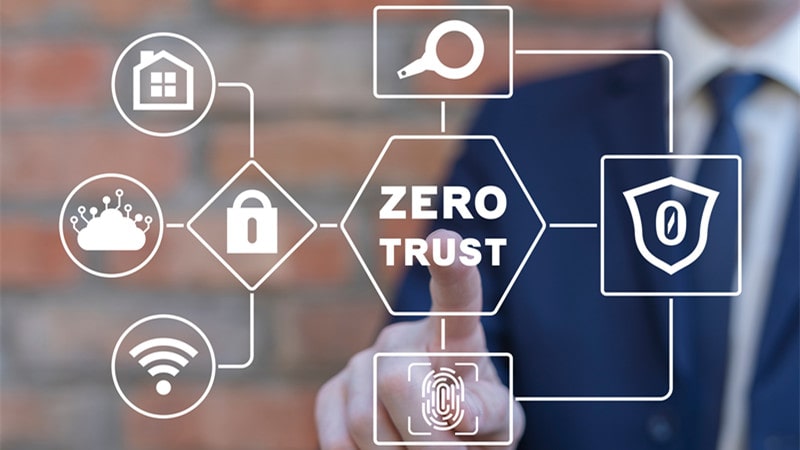As companies continue to embrace a work-from-anywhere culture after the pandemic, they need a secure remote access solution that provides centralized and granular control over application and resource connections. Look for a ZTNA solution that supports a software-defined perimeter and can help you strengthen your cybersecurity program and adhere to compliance standards.
Zero Trust Access
Modern businesses depend on remote access to business-critical applications, including OT (operational technology) systems. Employees connect to corporate IT infrastructure outside the corporate LAN through hybrid work arrangements, BYOD, and contracting. Traditional VPNs fail to meet these demands, so organizations need a new secure remote access solution based on zero-trust security principles.
Zero trust network access (ZTNA) provides a more secure and reliable alternative to virtual private networks (VPNs). ZTNA technologies leverage cloud-based service or broker architectures to monitor access to a corporate network. These services authenticate and verify users and devices, providing granular, secure access to specific applications.
The best ZTNA solutions also include features such as single sign-on (SSO) to streamline the user experience and enforce strict policies, device posture checks that assess a device’s security status, and continuous monitoring to detect risky internet behavior.
As the replacement for aging VPNs, zero trust access is becoming more widely adopted in enterprise environments. However, we recommend against taking a “rip-and-replace” approach to replace legacy access with zero trust.
Instead, begin with a pilot to identify risks and test the effectiveness of zero trust access before gradually migrating low-risk apps until all business applications are moved to a ZTNA solution. It will minimize disruption to your workforce and avoid unnecessary risky cyber exposure.
Zero Trust Policy
Unlike traditional VPN solutions, which offer only secure remote access to apps and data, ZTNA provides holistic control and visibility by applying security policies based on various factors. It includes user identity and role, device posture, risk level of applications, network traffic to and from the device, and more.
A ZTNA solution should also be able to separate the control and data planes, as this offers granular access controls and helps prevent threats from moving laterally through a protected network. It should also support out-of-the-box integration with an identity provider (IdP) through a standard like SAML 2.0 and feature intuitive, granular policy configuration. Finally, a robust security platform ensures scalability and a positive end-user experience.
As the IT landscape shifts towards a hybrid work-from-anywhere model, looking at ways to secure remote access to data and applications is essential. ZTNA solutions can be a powerful tool to help reduce risks, improve control, and provide a great user experience.
But to succeed, organizations must commit to adopting this new approach and hold all employees accountable for safe remote work practices. It will require leadership from the executive suite and cybersecurity teams, comprehensive security standards and policies, and strong employee support and training to enable this critical change.
Zero Trust Visibility
Zero Trust visibility focuses on preventing access to applications not explicitly authorized by policy. ZTNA solutions use a software-defined perimeter to secure applications across the internet by using outbound-only connections and encrypting traffic at the device level. It makes the network invisible to unauthorized users, significantly reduces risks, and improves the security posture of your corporate ecosystem.
Legacy networks assumed a hard perimeter, but today’s workers are increasingly remote and work from home (WFA), mobile (Mobility), or cloud-based (SaaS, DaaS). A zero-trust approach to access management considers these shifts and enables a flexible and secure working environment.
A robust Zero Trust model requires continuous identity verification as users connect to internal applications, even as their devices change location and posture. It also requires the ability to automatically assess a user’s and their device’s risk to make access determinations on a case-by-case basis.
Managing all the pieces required for a holistic approach to security is complex and costly for overburdened IT and security teams. A comprehensive universal ZTNA solution streamlines admin and delivers the visibility, control, and scalability you need to support your Zero Trust strategy. Ideally, you’ll choose a single platform that can provide all the core functionality required to protect your users, use cases, and digital ecosystem, both in-office and remote.
Zero Trust Mobility
The emergence of cloud, mobile, edge, and IoT computing has blurred the demarcation points of the network perimeter. To combat this, Zero Trust assumes everything inside and outside is untrustworthy and authenticates every connection for security and availability. This approach enables a micro-segmented network with extreme access control, limiting the attack surface. It also supports secure remote connectivity for an increasingly mobile workforce.
Unlike VPNs, Zero Trust provides strong authentication by requiring users and devices to constantly authenticate, verify their identity on the back end, and continuously assess risk at the network boundary. It allows security operations teams to establish a baseline for risk and quickly detect changes.
Federal agencies can leverage Zero Trust solutions to adapt to situational telework, mitigate cybersecurity risks, and support digital transformation. By deploying a zero-trust architecture, agencies can protect critical assets, improve security posture, and scale with a hybrid workforce.
When selecting a ZTNA solution, look for one that integrates with leading cloud, identity, and endpoint protection vendors to deliver an integrated security platform. This approach provides superior user experiences by eliminating VPN latency and securing data from a single platform rather than through multiple-point products that backhaul traffic across the network.
Additionally, it reduces costs by reducing the need for costly and cumbersome network perimeter firewalls.




